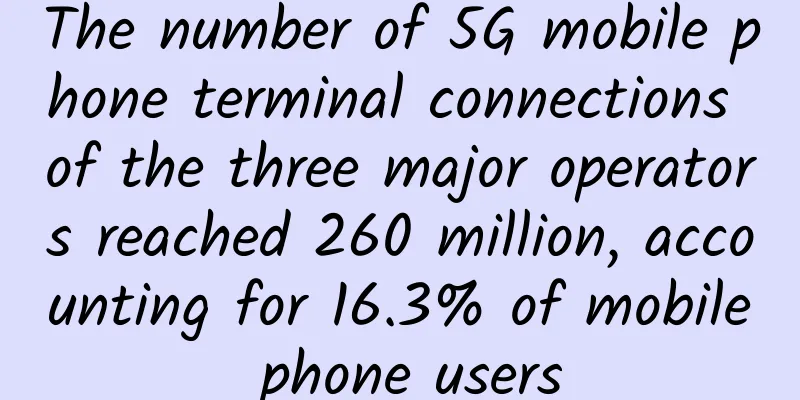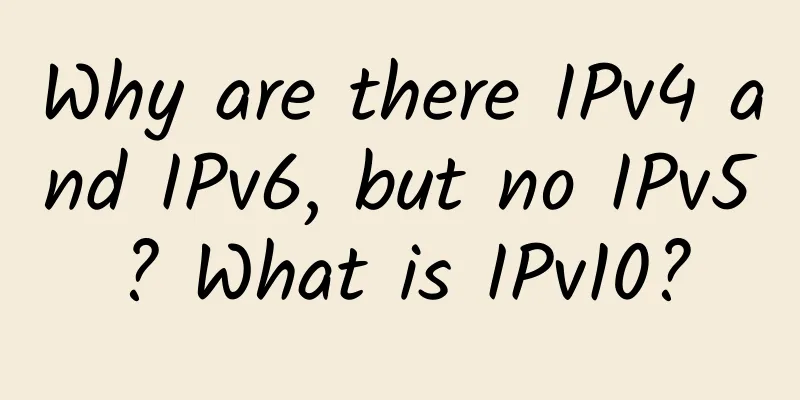5G development strategies and measures of major countries and regions and their implications for my country

|
At present, a new round of scientific and technological revolution and industrial transformation is in full swing, digital transformation is sweeping the world, and the new economy represented by the digital economy is developing rapidly, profoundly changing people's production and lifestyle. As a leading technology in the field of new generation information and communication technology, 5G accelerates the opening of a new era of the Internet of Everything and is a key information infrastructure supporting the digitalization, networking and intelligent transformation of the economy and society. Countries around the world attach great importance to the development of 5G, have issued relevant development strategies, and promoted it to the level of national strategy. Global 5G development is in full swingOn December 1, 2018, South Korea's three major telecom operators announced the launch of 5G commercial communication services, marking the beginning of global 5G commercialization. Since then, 5G commercialization has emerged and the world has accelerated towards the 5G era. According to GSA statistics, as of the fourth quarter of 2020, 140 operators in 59 countries around the world have provided 5G commercial services. Among them, China has built the world's largest 5G commercial network so far, with a total of more than 700,000 5G base stations. There are more than 230 million 5G users worldwide, of which more than 200 million are in China, accounting for more than 80% of the global share. 5G is the information infrastructure for building the Internet of Everything, supporting the digitalization, networking, and intelligent transformation of the economy and society, becoming a new driving force for economic growth, and bringing significant economic value and social benefits. According to estimates by the international consulting firm IHS, by 2035, 5G will create $12.3 trillion in economic output worldwide, the 5G value chain will create $3.5 trillion in output, and create 22 million jobs. According to estimates by the China Academy of Information and Communications Technology, by 2030, in terms of direct contribution, 5G will drive my country's total economic output, economic added value, and employment opportunities to 6.3 trillion yuan, 2.9 trillion yuan, and 8 million, respectively. 5G has become the connection center of the new generation of information technology with its powerful ability to meet multiple scenarios and multiple indicators. It is the basic information technology that promotes a new round of scientific and technological revolution and industrial transformation. Governments of various countries also have a consistent understanding of the basic supporting role of 5G. For example, former US Attorney General William Barr said: "5G technology is at the center of the future technology and industrial world that is taking shape... It is evolving into the next generation of the Internet, the industrial Internet, and the central nervous system of the next generation of industrial systems that rely on this infrastructure." The European 5G Action Plan also mentioned that "5G technology is a key enabler of industrial transformation... It will set off a wave of innovative business models in many fields such as transportation, medical care, manufacturing, logistics, media and entertainment." Japan positions 5G as "the information and communication infrastructure that constitutes the foundation of economic society and national life." In the past, most mobile communication technologies were included in the national broadband strategy together with fixed networks, and were never proposed as a national strategy. It is rare for 5G, as a mobile communication technology, to be promoted as a special national strategy by many countries. This shows that 5G has important strategic significance and has become a consensus among countries. Many countries have elevated 5G to the level of national strategy, and have deployed key areas and main directions of industrial development from a top-level perspective. For example, South Korea issued the "5G Mobile Communication Pioneer Strategy" in 2013 and launched the "5G+" Strategy for Achieving Innovative Growth in 2019; Japan issued the "Strategy for Achieving 5G by 2020" in 2016 and the "Beyond 5G Promotion Strategy Outline" in 2020; the European Union issued the "5G Action Plan" and led 24 European countries to release their own 5G strategies; the United States issued the "5G FAST Plan" and the "US 5G Security National Strategy" in 2018 and 2020 respectively. Analysis of 5G development strategies of major countriesIncrease the supply of spectrum resourcesThe mid-band spectrum is recognized by global operators as the "golden" frequency band for 5G networks, and is also the main spectrum used in 5G commercial use in various countries. Japan, South Korea and some European countries are leaders in the deployment of mid-band spectrum, and they are constantly adding spectrum resources. The main mid-band frequency band for 5G deployment in Europe is 3.4GHz~3.8GHz. More than 10 EU member states have allocated 5G mid-band spectrum, and more member states plan to auction mid-band spectrum in 2020-2021. South Korea auctioned 280MHz of mid-band spectrum in the 3.5GHz band to the three major operators in 2018, and will re-cultivate the 3.7GHz~4.0GHz band currently used for satellite communications from the second half of 2020 for 5G. In 2019, Japan allocated a total of 600MHz of mid-band spectrum in the 3.7GHz and 4.5GHz bands to the four major operators. The United States is the only country that mainly deploys 5G in the millimeter wave band in the early stages of 5G development, and is currently accelerating the pace of mid-band spectrum allocation. In order to get rid of the backward situation of mid-band ecology, the United States began to vigorously deploy mid-band spectrum, launched the first 5G mid-band spectrum (3.55GHz~3.65GHz) priority access license auction in July 2020, and auctioned 280MHz spectrum in the C band (3.7GHz~3.98GHz) on December 8, 2020, and plans to open the 3.45GHz~3.55GHz band spectrum originally used for military purposes for commercial use. After the implementation of these measures, the United States is expected to provide 530MHz spectrum for 5G in the range of 3.45GHz~3.98GHz, which can be used for the construction of higher-capacity 5G networks. Millimeter waves have the advantages of high bandwidth, rich spectrum resources and low latency, which can better meet the business needs of ultra-large capacity and concurrency. At present, many countries in the world have allocated 5G millimeter wave spectrum. As of September 2020, spectrum allocation in millimeter wave bands has been carried out in many regions such as North America, Asia Pacific, and Europe, mainly focusing on the 26GHz and 28GHz bands. The United States leads the global 5G millimeter wave deployment and is the country with the earliest and most complete millimeter wave band allocation. At present, the United States has completed the auction of 24GHz, 28GHz, 37GHz, 39GHz and 47GHz bands, adding a total of 5GHz millimeter wave spectrum for 5G. The European Union coordinates the use of the 26GHz band for 5G services, and member states are advancing spectrum allocation as planned. At present, some countries have completed millimeter wave spectrum allocation, and some other countries (such as Italy and Finland) are still promoting millimeter wave allocation despite the impact of the new crown pneumonia epidemic, and plan to auction millimeter wave spectrum in 2021. Japan and South Korea have learned from the US spectrum strategy and started 5G millimeter wave spectrum allocation earlier, focusing on the 28GHz band. As early as June 2018, South Korea auctioned 2400MHz bandwidth 5G spectrum in the 28GHz band to three major operators; Japan completed the spectrum allocation in the 28GHz band in April 2019, with four operators each receiving 400MHz spectrum. Operators in other parts of the Asia-Pacific region (such as Australia and some countries in Southeast Asia) plan to start 5G millimeter wave deployment in 2021. In addition to allocating spectrum resources, many countries have also achieved mobile spectrum sharing through various technical means. The first is to share frequency bands through a dedicated access system. For example, the United States has designated 3.5GHz as a shared frequency band, and prevented other users from interfering with existing military users through a dedicated access system. The second is to use artificial intelligence technology to achieve sharing. For example, the National Institute of Standards and Technology (NIST) of the United States plans to use machine learning technology to help wireless networks including 5G more effectively select and share communication spectrum. The third is to use blockchain technology to achieve sharing. For example, the US FCC proposed that 6G will adopt a more intelligent and distributed blockchain-based dynamic spectrum sharing access technology, instead of supporting shared spectrum access through a centralized shared database, in order to improve spectrum efficiency and further increase access levels and the number of access users. Multiple measures to reduce pressure on network constructionThe large-scale and dense deployment of small base stations is an important part of 5G network construction. European and American countries have simplified the deployment process of small base stations by setting new laws and regulations to accelerate the process of network densification. The US regulatory agency FCC has simplified the local government's licensing and site selection process for small base station deployment, and plans to deploy 800,000 5G small base stations by 2025; the original approval process generally takes 1 to 2 years, and the new law will shorten it to 60 to 90 days. Several states in the United States have proposed bills to simplify the deployment of small base station equipment on street facilities and impose restrictions on local government charges. The European Union passed a new European Electronic Communications Code in November 2018, proposing to simplify the deployment conditions and related regulations of small base stations to reduce the cost of deploying ultra-dense networks. The five Nordic countries also proposed in the jointly issued 5G cooperation agreement to eliminate obstacles in the deployment of 5G networks, especially the establishment of base stations and antennas. The expansion of fiber optic infrastructure is an important support for the development of network density. Due to its large capacity and high reliability, it is regarded as the most ideal backhaul network type for connecting small base stations. Therefore, many countries have coordinated the construction of fiber optic networks and 5G mobile networks, and regard the construction of fiber optic networks as an important part of the 5G strategy. For example, the British government believes that promoting the development of fiber optics is a priority for the development of 5G, and has implemented a five-year tax incentive for companies that build new fiber optic network infrastructure. The city of London has also developed a standardized right of way toolkit to efficiently deploy fiber optic infrastructure. For three consecutive years (2018-2020), the US operator Verizon deployed approximately 20 million kilometers of optical fiber each year to increase wireless network capacity and reduce latency. The construction of a large number of small base stations, the transformation of existing wireless access networks and core networks, and the construction of more backhaul networks connected to small base stations will significantly increase 5G investment. Regulators reduce the investment pressure on operators by limiting fees, co-construction and sharing. For example, the US FCC has set a limit on the city government's charging standards for the deployment of small base stations, with the cost of using existing poles being $500 and the cost of installing new poles being $1,000. The Austrian regulator issued a position paper to encourage 5G network sharing. The South Korean Ministry of Communications also requires its three major operators to cooperate in the deployment of 5G technology to launch services at a scheduled commercial time. The French regulator Arcep has also evaluated the possibilities and opportunities of sharing small base station networks to guide 5G network deployment. Accelerate technology R&D deployment and innovationSince 2019, the United States, Japan, South Korea, the European Union and other countries have intensively released 6G strategies and technology research and development plans, actively making plans and accelerating the development of the next generation of mobile communications. The United States is simultaneously promoting technology research and development and spectrum opening, and actively deploying 6G. In February 2019, the Trump administration stated that it would "leapfrog 5G and accelerate the development of 6G technology." The American standardization organization, the American Telecommunications Industry Solutions Alliance (ATIS), released a report in May 2020, calling on the United States' "government, industry, and academia" to jointly promote the standardization and commercialization of 6G and ensure the United States' leadership in the innovation and development of 6G. In the specific promotion, on the one hand, the United States first carried out technical exploration and funded universities to conduct research and tackle key problems. In 2018, the U.S. DARPA launched research on terahertz communication and sensor fusion technology, and at the same time funded top universities such as New York University to carry out research and tackle key problems in terahertz transmission technology and microchips. On the other hand, the United States opened a dedicated frequency band for terahertz experiments. In March 2019, the FCC took the lead in the world to announce the opening of the terahertz frequency band (95GHz~3THz) for technical experiments, and then issued a 10-year experimental spectrum license in June, providing basic resource guarantees for 6G research and development in the case of spectrum shortage. In addition, the United States has established an industry alliance to promote the establishment of 6G industry leadership. In October 2020, the U.S. Telecommunications Industry Solutions Alliance announced the establishment of a 6G industry alliance called "Next G Alliance", whose members include multiple operators, chip manufacturers, equipment manufacturers, service providers and other industry chain companies, focusing on R&D, manufacturing, standardization and market. It will formulate a 6G national roadmap and establish core priorities for 6G technology to influence government policies and investments and promote the commercialization of next-generation mobile communication technologies. Europe is exploring 6G technology ahead of time and expanding the scale of R&D investment. As one of the earliest regions in the world to pay attention to the development of 6G, Europe is exploring the pre-research of 6G technology ahead of time. As early as 2017, the European Union launched a 6G technology R&D project consultation, and then launched a three-year 6G basic technology research project in September, including the next generation of error correction codes, advanced channel coding, modulation technology, terahertz technology, etc. In September 2019, the University of Oulu in Finland organized the release of the world's first 6G white paper to guide the future development of 6G. On the other hand, in order to increase project investment, the European Commission plans to launch a new phase of the "European Horizon" research project in 2021, with a planned investment of 100 billion euros to promote the development of key technologies and industries including 6G, of which more than 2.5 billion euros are expected to be used for 6G technology research and development. Japan relies on its industrial foundation advantages such as semiconductors and optical devices to support 6G technological breakthroughs. Japan has learned from the lessons of the relatively lagging development of 5G and actively sought innovation leadership in the 6G era. On the one hand, the Ministry of Internal Affairs and Communications of Japan issued the "B5G Promotion Strategy Outline" in June 2020. As the world's first national-level 6G comprehensive development strategy, it proposed a time plan of "gradually completing basic technology research and development and launching 3GPP international standardization in 2025, starting 6G technology trials in 2027, and realizing 6G commercial services in 2030". At the same time, it clarified various research and development tasks and provided clear guidance for the systematic promotion of 6G. On the other hand, Japanese companies use the leading advantages of upstream industries such as semiconductors, optical devices, and basic materials to accelerate the breakthrough of 6G key technology research and development. In October 2019, Japan's NTT, together with Sony, signed a 6G R&D cooperation agreement with Intel of the United States, committed to the development of low-power optical drive chip technology. In early 2020, NTT used indium phosphide semiconductor compounds to take the lead in developing 6G ultra-high-speed chips, which can achieve an ultra-high-speed transmission rate of 100Gbit/s over short distances in the terahertz frequency band. South Korea's "government, industry, academia, and research" work closely and advance in an orderly manner to seize the leading position in the development of 6G. In January 2020, the South Korean government announced that "the goal will be to commercialize 6G first in the world in 2028", and is determined to lead the global development of 6G. To this end, South Korea has strengthened the cooperation of all parties in the domestic "government, industry, academia, and research" to promote the development of 6G in an orderly manner. On the one hand, the South Korean government has advanced the layout of 6G and released a 6G research and development strategy. As early as April 2019, the South Korean government held a 6G forum with top experts from academia and industry, and officially announced the establishment of a 6G research team. In August 2020, the South Korean government issued the "Future Mobile Communications R&D Strategy Leading the 6G Era", planning to invest approximately 1.17 billion yuan in the research and development of 6G technology in the five years starting from 2021, focusing on 6G international standards and strengthening the industrial ecosystem. On the other hand, South Korean technology giants have joined forces with research institutions to carry out pre-research and standardization of 6G technology. In January 2019, LG took the lead in establishing the "6G Research Center" in conjunction with the Korea Advanced Technology Research Institute to lead the global standardization of 6G. In June of the same year, Samsung established the "Next Generation Communications Research Center" to strengthen 6G technology and standardization research, and worked with SK Telecom to explore 6G business models. In July 2020, Samsung released a 6G white paper, which systematically summarized its research results and echoed the South Korean government's 6G layout plan, highlighting the close cooperation between its domestic "government, industry, academia, and research." 5G Converged Application Policy5G applications, especially industry applications, are the key to the successful development of 5G and the focus of leading countries in 5G deployment in the next stage. Therefore, major countries have created a good policy environment for the innovative development of 5G applications, promoted key industries to upgrade with the help of 5G technology, encouraged vertical industries to explore innovative applications and business models, and actively guided the development of new applications and new ecosystems. At present, traditional industrial powers such as Germany, Britain, and Japan allocate dedicated frequency bands for 5G private networks in order to consolidate the advantages of traditional industries through 5G private networks. In November 2019, Germany opened the application for 5G private network licenses in the 3.7GHz~3.8GHz frequency band, encouraging industry users to explore the application of 5G private networks in industries such as industry, agriculture, and forestry. As of June 2020, more than 50 companies including Bosch, BMW, BASF, Siemens, and Lufthansa have obtained 5G private network licenses. In July 2019, the UK opened four private network frequency bands of 1800MHz, 2300MHz, 3.8GHz~4.2GHz, and 24.25GHz~26.5GHz for industry users to apply. At the same time, in order to meet the personalized business needs of industry users, the UK allows industry users to apply for private network licenses by region (circular area with a radius of 50 meters) or single base station. In 2019, Japan announced that the 5G private network frequency bands are 4.6GHz~4.8GHz and 28.2GHz~29.1GHz. However, since some frequency bands are currently occupied by other services, only 28.2GHz~28.3GHz is open for industry users or local governments to apply. Fujitsu and Mitsubishi Electric have built automated and intelligent factories through 5G private networks. At the same time, the Tokyo Metropolitan Government has become the first local government to obtain a 5G private network license. In the future, it will vigorously promote the independent deployment of 5G networks in Tokyo and the continuous expansion of commercial scenarios. In addition to Germany, the United Kingdom and Japan, which have opened private network frequency band applications, the Netherlands, Sweden, Belgium, Luxembourg and Chile have all planned to allocate 5G private network frequency bands for vertical industries, and all are in the mid-frequency band. Some countries have introduced strategies for the integration and development of 5G and related industries, using the huge enabling role of 5G to drive the upgrading of industries with economic shortcomings and achieve the goal of high-quality economic development. For example, South Korea has driven the development of the service industry through 5G and promoted the transformation and upgrading of its economic structure. The service industry is the shortcoming of South Korea's economic development. South Korea has launched several advanced service industry programs, but with little success. Shortly after South Korea launched 5G communication services, the South Korean government issued the national-level "5G+ Strategy for Achieving Innovative Growth", focusing on establishing various core intelligent services based on 5G, such as unmanned driving, artificial intelligence, smart factories, smart cities, etc., accelerating the application of 5G technology in new fields and new industries, and leading the transformation and upgrading of the industrial structure with 5G. my country actively promotes the integration of 5G and the industrial Internet, and promotes the digitalization, networking, and intelligent upgrading of industry. The Chinese government attaches great importance to the integrated development of 5G and the industrial Internet. From the central to the local level, a series of policies and support measures have been introduced to guide the integration and innovation of 5G and the industrial Internet, accelerate the process of new industrialization, and support the digital transformation of the economy and society. 5G will reshape the business model. Countries have accelerated exploration in various ways and actively promoted 5G test beds and pilot projects to stimulate new business models. For example, the UK has launched the "5G Test Bed and Pilot Project", which aims to test 5G technology in industries such as industry, transportation, tourism, medical care, and agriculture to create new applications and services; South Korea invested 274 billion won (about 254 million US dollars) in 2018 to carry out 5G pilot projects in the public sector for emergency services, disaster relief, medical care, administration, and national defense. In order to develop Internet of Vehicles and autonomous driving, some European countries have also signed a series of agreements to strengthen collaborative exploration. For example, the Vigo and Porto and Evora and Merida joint corridors established by Spain and Portugal, and the Thessaloniki-Sofia-Belgrade corridor established by Bulgaria, Greece, and Serbia. In addition, many governments have also accelerated the industrialization of 5G applications by increasing government investment. For example, the South Korean government took the lead in applying 5G technology in the public service field, the government established and led application projects, and the government's advance investment led to increased investment in the private sector. Accelerate the development of 5G in my countryPromoting network construction in a moderately advanced mannerA 5G network with complete coverage, advanced technology and excellent quality is the premise and foundation for the development of 5G. Major countries and regions have adopted a variety of measures to reduce the threshold for network deployment and accelerate the progress of network construction. my country should play the core role of 5G "new infrastructure", coordinate the construction of 5G networks with information and communication infrastructure such as the Internet of Things and data centers, moderately advance the construction of 5G networks, and implement support policies such as open sharing of public infrastructure and preferential electricity prices. Accelerate the maturity of technical solutions such as end-to-end network slicing and edge computing to break through the bottleneck of network supply capacity. Accelerate the promotion of application implementationApplication is the key link in the development of 5G, and industry application is the focus of 5G application. At present, application development has attracted the attention of all countries, and industry, medical care, automobiles, etc. have become key application areas. The next step should focus on the key links of application, break through industry barriers, and accelerate the development of application. First, orderly promote the in-depth application of 5G in the fields of medical care, energy, media, autonomous driving, etc., and explore the formation of a replicable and popularizable business model. Promote the large-scale development of 5G industry modules and reduce the cost and threshold of 5G applications. Second, accelerate the research on 5G virtual private networks, make full use of the deployment model of 5G industry virtual private networks, fully reuse the mature 5G network resources and industrial chain of the public network, and promote the formation of 5G industry virtual private network standards jointly participated by all parties in the industry. Third, vigorously promote 5G industry applications and promote the adoption of mature 5G industry applications in government and public institutions first. Carry out R&D layout for next-generation technologiesAt present, major countries and regions have launched the research and development of next-generation technologies, stepping up efforts to seize the commanding heights of future mobile communication technology development. It is recommended that my country conduct in-depth research on B5G evolution technology and 6G innovative technology, give full play to the advantages of the new national system, promote close cooperation among "government, industry, academia, and research", give full play to the organizational and coordinating role of key platforms, conduct research on ultra-high reliability and ultra-low latency wireless network evolution technology solutions, cultivate innovative mobile information network technologies for 6G, and conduct research and development of ultra-high performance wireless transmission, terahertz and other technologies. Deepening international exchanges and cooperationThe rapid development of my country's mobile communications is inseparable from the close cooperation with the global mobile communications industry. At the same time, my country has made positive contributions to the development of mobile communications technology and the popularization of services worldwide. In the next step, my country should further strengthen international cooperation and exchanges, build various forms of communication platforms, and strengthen international cooperation in technological innovation, standard setting, and product research and development. At the same time, expand the opening of my country's 5G market and encourage foreign-funded enterprises to profit from the development of my country's 5G. In addition, promote the establishment of an international 5G security consensus, strengthen the discussion of 5G security response strategies through bilateral and multilateral mechanisms, and strengthen the construction of security trust mechanisms. At present, 5G development is still in the early stage of commercial use. It has great potential and broad prospects for empowering thousands of industries and fully supporting the digital transformation of the economy and society. In the future, countries will continue to promote the safe, green and healthy development of 5G, use 5G technology to address social, economic and environmental development issues, and promote the realization of a better and more sustainable blueprint. |
>>: my country has initially built the world's largest 5G mobile network
Recommend
Byte One: Is there any difference between HTTP long connection and TCP long connection?
Hello everyone, I am Xiaolin. A reader sent me a ...
Will an Ethernet splitter reduce my internet speed?
This article provides a detailed summary of Ether...
What can 5G technology do? It will have a significant impact on 20 industries
First of all, we must know what 5G is. In a nutsh...
How to use the Shodan search engine to diagnose vulnerabilities?
The Shodan search engine allows users to find spe...
RAKsmart adds Hong Kong large bandwidth and 20% discount promotion, US/Hong Kong/Japan cluster server 258 IP
RAKsmart has added a new Hong Kong high-bandwidth...
Discussion on 5G+4G wireless network collaboration and key networking technologies
Labs Guide This article starts with analyzing the...
How to improve WiFi quality without increasing budget? 6 tips to improve enterprise LAN WiFi performance
Assuming your company has no funds for upgrading ...
Hosteons: OpenVZ/KVM VPS hosting 50% off, $13.5 per year, multiple data centers in Los Angeles/New York
The last time I shared information about Hosteons...
iWebFusion: $9.38/month-4GB/30GB/2TB/Los Angeles & North Carolina data centers
iWebFusion (iWFHosting) was founded in 2001. It i...
Why is Low Power WAN the First Choice for IoT Applications?
Enterprises looking to launch and expand IoT appl...
Seven steps to easy network segmentation
Network segmentation is a network security tool t...
In the F5G era, home broadband is moving towards Gigabit. Don’t let the optical modem hold you back.
Mobile networks have entered the 5G era, and thei...
Let's talk about network programming
Introduction 【1】Network programming: Computers di...









